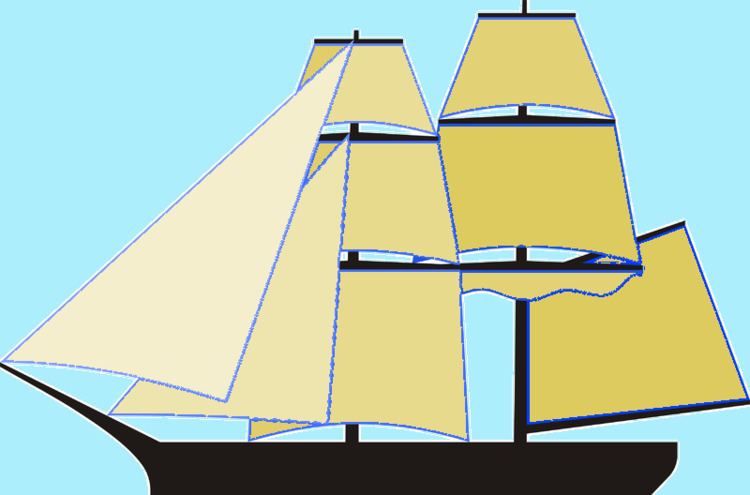Name USS Viper Length 22 m Displacement 129,700 kg | Laid down date unknown Weight 145.3 tons | |
 | ||
Christened originally as the cutter Ferret Completed between 1806 and 1809 at the Norfolk Navy Yard Commissioned 18 April 1809 as the USS Ferret Captured 17 January 1813 by the 32-gun frigate HMS Narcissus | ||
USS Viper – commissioned as USS Ferret – was a brig serving the United States Navy during the early days of the republic. Viper was assigned to enforce the Embargo Act of 1807 along the U.S. East Coast. During the War of 1812, while cruising in the Caribbean, she was captured by the more heavily armed British warships. She then served the Royal Navy as HMS Mohawk until she was sold in 1814. While in British service she served in several actions that earned her crew the Naval General Service Medal,
Contents
Built in Virginia
The first ship to be named Viper by the Navy, was originally the cutter Ferret. She was designed by the naval architect Josiah Fox and built at the Norfolk Navy Yard, Norfolk, Virginia, between 1806 and 1809, and was commissioned under her old name on 18 April 1809, Lieutenant Christopher Gadsden, Jr., in command.
Enforcing the Embargo Act of 1807
Shortly after her commissioning, Ferret cruised along the coast of the Carolinas and Georgia to aid in the enforcement of the Embargo Act of 1807. She was renamed Viper during re-rigging as a brig at the Washington Navy Yard in 1809 and 1810, and from Washington sailed to New Orleans, Louisiana, arriving there on 18 March 1811. Viper remained off the U.S. Gulf Coast enforcing the Embargo Act until the outbreak of the War of 1812.
Captured during the War of 1812
During the war, Viper proved woefully inadequate in deep water operations against the larger, more heavily gunned British warships. On 17 January 1813 the 32-gun frigate HMS Narcissus captured Viper off the coast of Belize, British Honduras and took her to New Providence in the Bahama Islands. At the time of her capture Viper was armed with 12 guns, had a crew of 93 men and had been cruising for seven weeks off Havana, having made no captures.
British service
The Royal Navy renamed her Mohawk and commissioned her under Commander Henry Dilkes Byng for operations in the Chesapeake.
Battle of Rappahannock River
Mohawk was one of the vessels in the squadron under Admiral Sir John Borlase Warren's squadron that contributed boats and men to the cutting out party under Lieutenant J. Puckinghorne that rowed 15 miles up the Rappahannock River on 13 April 1813. The British captured four American privateer schooners: Dolphin, Lynx, Racer and Arab. Although the British sustained a number of casualties, Mohawk herself sustained no casualties.
The British took three of the schooners into service. Lynx became Mosquidobit. Racer became Shelburne, and Dolphin retained her name. It was difficult for the British to free the Arab and though they eventually succeeded, the vessel was apparently badly damaged and was not commissioned for British service. She was taken to Halifax where the Vice-Admiralty Court condemned her.
Mohawk was among the vessels benefiting from a number of captures. Announcements of prize money and head-money include:
On 29 April 1813, boats from Mohawk, together with boats from Fantome, Dolphin and Highflyer and Racer, which had not yet been renamed, went up the Chesapeake Bay to Frenchtown to destroy five American ships and stores; they also purchased provisions for the squadron from the locals. This took until 3 May 1813 to complete. On the way back, a battery fired on the British from the shore; a landing party destroyed the battery. The Admiralty would later issue the clasp "28 April Boat Service 1813" for the Naval General Service Medal to all surviving claimants from the action.
Mohawk was among the ships benefiting from the proceeds of the capture of the American ships Rolla (29 May) and Protectress (18 June). She was also among the vessels benefiting from the capture of the Spanish brig St. Iago (11 June 1813), the American schooner Surveyor (12 June), the American ships Governor Strong and Emily (12 June), Star (14 June), and Herman (21 June).
On 14 July 1813 the brigs Contest and Mohawk spotted the American schooner USS Asp and the Scorpion and immediately gave chase. Scorpion made good her escape up the Chesapeake, but Asp's poor sailing qualities forced her to put back into the Yeocomico River. Contest and Mohawk anchored off the bar and prepared a boat expedition.
Contest's cutter, under the command of Lieutenant Curry, and Mohawk's cutter, under the command of Lieutenant Hutchinson, followed Asp three or four miles up the Yeocomico. Asp was armed with one long 18-pounder gun and two 18-pounder carronades, together with some swivels. She had a crew of 20 men under the command of Midshipman Sigourney.
As the British boats approached, Asp cut her cable and tried to escape further up the river. The American account states that three British boats attacked but were beaten off. Then two other British boats joined the first three for a second attempt, which proved successful. The Americans fought valiantly in spite of the lopsided odds. Midshipman Sigourney and ten of his 20-man crew were killed defending their ship while the remainder escaped ashore when the issue became hopeless.
Despite fire from Asp and from militia on the shore, the British captured Asp within a short time, but at a cost of two men killed and six wounded, including Lieutenant Curry (slightly). The British set fire to Asp and retired. At that point, Asp's second in command, Midshipman H. McClintock, led the remnants of Asp's crew back on board, extinguished the flames, and put her back in fighting trim. For whatever reason, the British declined to renew the combat.
Fate
Commander Henry Litchfield assumed command in July 1813. Mohawk was sold in 1814.
